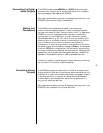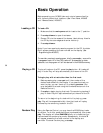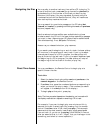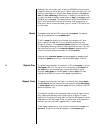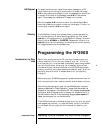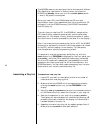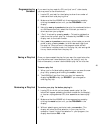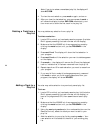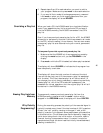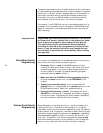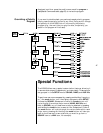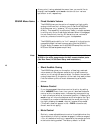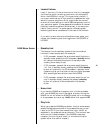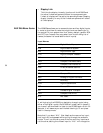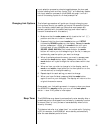
45
5. Repeat steps 2 and 3 for each selection you want to add to
your program. Make sure to press mode + after each selection.
6. If you would like to make this change permanent, press and
hold mode + when you finish erasing selections from your
program; the display will show REVISED.
Overriding a Play List When you load a CD, the Nº390S reads its unique identification
code. If you assemble a play list for a particular CD and save it
into the Nº390S’s memory, the Nº390S “remembers” that CD’s
play list.
Even if you have previously saved a play list for a CD, the Nº390S
allows you to temporarily override it (and have access to all tracks
on the CD), without erasing it from memory. You can even create
a temporary play list as an alternative to your normal, permanent
play list.
To temporarily override a previously saved play list:
1. Make sure that the Nº390S is in the programming mode by
clicking the mode button until you see PROGRAM in the
display
2. Press mode – while the CD is loaded, but before play has started.
The display will show CLEARED to indicate that the program has
been temporarily overridden.
The display will show the total number of tracks and the total
time on the disc (as it would if there were no play list associated
with the disc). The P that denotes play list will be turned off. (If
you change your mind, simply press stop to restore the previously
created play list.) All of the CD’s tracks will subsequently be
accessible for normal operations, but the original play list will still
be retained in the Nº390S’s memory.
Erasing Play Lists from To permanently erase a previously saved play list from the
Memory Nº390S’s memory, press and hold the mode – button while
stopped in the PROGRAM mode; the display will show DELETED.
Why Polarity During the recording process, the polarity of the recorded signal is
Programming? typically inverted many times. If the total number of 180° inversions
is even, the “net” polarity remains unchanged; if odd, a 180°
polarity inversion is introduced. Some people seem quite sensitive
to this distinction. (The difference can be envisioned by imagining
a kick drum being struck: the initial motion of the drum head is
forward, forming a compression wave; if inverted, it would be
reproduced as though the drum head had initially moved backward,
creating a rarefaction.)



